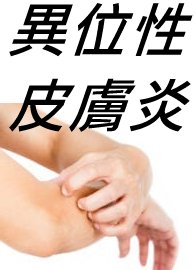search
subject
| symptom | Postpartum Abdominal Pain |
smart_toy
bubble_chart Concept
The abdominal pain that occurs after childbirth is called postpartum abdominal pain, also known as "postpartum abdominal pain".
Yizong Jinjian.Gynecology Essentials includes abdominal pain caused by food injury (dyspepsia) after childbirth under postpartum abdominal pain. However, considering its disease cause is unrelated to childbirth and the pain is located in the stomach, it is not within the scope of this discussion.
bubble_chart Pattern Analysis
- Blood Deficiency︰Dull pain in the lower abdomen, soft abdomen that prefers pressure, lochia pale in color and scanty in amount. Dizziness and flusteredness, sagging and distension in the lumbosacral region, tongue texture pale red, pulse manifestation thin and weak. Mostly caused by constitutional blood deficiency, or excessive postpartum loss of blood, sudden emptiness of the Blood Sea, and spasms of the uterus with appendages. The key points of differentiation are: dull pain in the lower abdomen, pain that prefers pressure, accompanied by dizziness, tinnitus, lumbosacral sagging and distension, pale tongue, and weak pulse. Treatment should focus on nourishing blood and harmonizing the nutrient to relieve pain. Prescriptions include Angelica Center-Fortifying Decoction, Angelica, Fresh Ginger and Mutton Decoction, or the Eight-Gem Motherwort Decoction.
- Blood Stasis︰Lower abdominal pain with tenderness, scanty and unsmooth lochia, dark in color with clots. The tongue texture is dark red with purple edges. The pulse manifestation is thin and choppy. It is generally caused by static blood retention and impaired contraction of the uterus with appendages. The condition is often characterized by severe lower abdominal pain with tenderness, accompanied by a dark red tongue texture with purple edges and a thin, choppy pulse. The treatment should focus on invigorating blood and resolving stasis. The recommended prescription is Generation and Transformation Decoction combined with Sudden Smile Powder.
- Cold Congealing︰Lower abdomen cold pain, tenderness upon pressure, occasional spasms, pain relieved by warmth, lochia discharge is scanty and unsmooth. Complexion is bluish-white, limbs are not warm. Tongue texture is dull, coating is white and slippery, pulse manifestation is deep-slow or wiry-tight. Mostly caused by exposure to cold during childbirth and stasis obstruction of the uterine vessels. The key clinical distinguishing features are: mostly spasmodic pain, palpation reveals cold lower abdomen, pain relieved by warmth. Additionally, accompanied by cold limbs, dull tongue texture, white-slippery coating, deep-slow or tight pulse, etc. Jingui Yaolue."Pulse Patterns and Treatment of Postpartum Diseases" also records an experimental therapeutic differential diagnosis method: "For postpartum abdominal pain, initially prescribe Immature Orange Fruit and Peony Powder; if it does not resolve, this indicates dry blood stasis below the navel, and Stasis-Precipitating Decoction should be prescribed." This valuable experience still holds high practical value today. Treatment should employ the method of warming meridians and dissipating cold. Prescriptions such as Xianggui Powder or Meridian-Warming Decoction are selected.
- 《Annotation of Furen Liangfang. Postpartum Section: "Postpartum abdominal pain may be caused by external contraction of the five pathogens, internal damage from the six excesses, or static blood stagnation. The cause should be identified and treated accordingly."
bubble_chart Other Related Items






